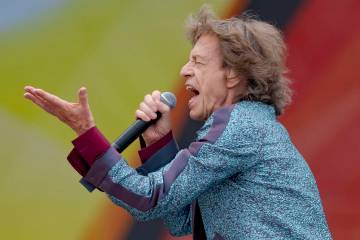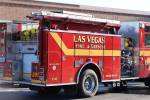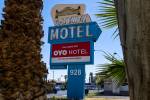Residents learn techniques to assist cardiac arrest victims
When it comes to sudden cardiac arrest, professionals have one message to the public: Do something, anything.
Six residents gathered Nov. 17 at the Centennial Hills Community Center, 6601 N. Buffalo Drive, to learn the steps necessary to save a life through hands-only cardiopulmonary resuscitation. While some of the group, mostly older adults, were there to refresh their skills, others were learning CPR for the first time.
The Save-A-Life program, which started a year ago, puts on community events throughout the year to teach people critical life-saving steps they can take using CPR techniques and an automated external defibrillator . The event typically lasts less than an hour, depending on questions, and is focused on people using the techniques on dummies, not just listening to a lecture.
Emergency medical services training officer Derek Cox with Las Vegas Fire & Rescue said that over the years, the agency noticed that attendance was better when people were not asked to stay for two hours for full certification.
Cox said that one of the main reasons people do not assist when they see someone go into sudden cardiac arrest is because they are afraid of making a mistake and causing harm. The goal of the class, he said, is to change that fear because, "It's always better to do something."
Las Vegas is getting better at cardiac arrest survival, Cox said. He said some U.S. cities have a survival rate of 5 percent if someone has sudden cardiac arrest on a street corner.
"Our city is 30 to 35 percent," Cox said. "We've gone from less than one in 10 to three out of four because of community education and team response," Cox said.
"Why don't people help out when someone goes unconscious? They're afraid to be sued and they're not sure what to do."
The American Heart Association reported in 2011 that 70 percent of Americans may feel helpless during a cardiac emergency because they do not know CPR. It also reported that if a bystander performs CPR immediately after the arrest, it can double or triple the victim's chance of survival, but only 32 percent of people in the country get that help. Fewer than 8 percent of people who suffer cardiac arrest outside of a hospital survive in the U.S., according to the American Heart Association.
But Cox reassured class participants that as long as they are trying to help in good faith and they are not a professional rescuer, then they typically do not need to worry about being successfully sued if they make a mistake.
Cox said step one is always shaking the person thought to be unresponsive and asking, "Are you OK?" just to make sure the situation warrants emergency medical response. Then he walked through the steps and arm positions for performing CPR and applying the defibrillator.
He said people often mistake the first few seconds of cardiac arrest as someone who cannot breathe.
"They look like a fish out of water, and people mistake that for not breathing, and that's really when you should do something," Cox said.
CPR buys health professionals necessary time to arrive to the scene. Unlike CPR lessons from years before, Cox said professionals no longer teach people to use breathing techniques and mouth-to-mouth contact. He said the only time that should be done is if it involves a child or baby and to call 911 so the operator can connect you to someone who can walk you through the techniques .
The American Heart Association has recommended hands-only CPR for adults since 2008 and reported that studies show it has been proven to be as effective as CPR with breathing techniques.
During the simulation, hairstylist Norma Cook learned from Las Vegas Fire & Rescue firefighter Jason Gross. She said she heard from clients that CPR no longer includes mouth-to-mouth, so she wanted to take a refresher course.
"You never know when a customer might just collapse in your chair," she said.
Gross said it was the third community CPR class he has assisted in and that the turnout Nov. 17 was lower than normal, typically averaging between 50 and 100 people. Seven residents, six firefighters , Cox and two representatives from the University Medical Center participated.
Cox said there is a push to require CPR and AED training courses for all high school seniors and to put more AEDs in sports complexes because the agency is seeing more incidents in children.
Patricia Andrews said she supports the campaign to get training in the schools. She had never done CPR training before but saw the advertisement in Las Vegas City Councilman Steve Ross' monthly newsletter and said she feels more confident after the class and willing to jump in if an incident arose. She said she had heard of AED before .
"I had never seen it, and now I know what to look for, so this is really good," she said.
The next CPR/AED training session is scheduled for 9 a.m. Jan. 30 at the center. Advance registration is required and is set to begin Monday . To register, visit the center or call 702-229-1702.
Contact Centennial and North Las Vegas View reporter Laura Phelps at lphelps@viewnews.com or 702-477-3839.





























